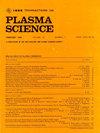电感储能双极脉冲电流发生器的研究
IF 1.5
4区 物理与天体物理
Q3 PHYSICS, FLUIDS & PLASMAS
引用次数: 0
摘要
双极脉冲电流源在越来越多的应用中表现出优异的性能。本文提出了一种新的基于感应储能的双极脉冲电流发生器拓扑结构。系统采用模块化结构,每个模块包括正、负两个部分,每个极性包含三个开关、两个二极管和一个电感。电感器串联充电,并联向负载放电,使存储的能量以电流的形式叠加到负载上。开发了一个具有5个正、5个负级的原型,在25 V的充电电压下实现了0到$\pm ~40$ A的输出电流范围。在1- $\Omega $电阻负载下,系统的最大脉宽为$5~\mu $ s,最小上升和下降时间为100 ns,在200 Hz的重复频率下稳定运行。此外,通过调整定时信号,可以实现多参数可调的脉冲电流输出,包括不同的极性、脉冲宽度和正负脉冲之间的间隔。最后,通过分析系统中各个操作过程的功耗,计算出系统的能效。本文章由计算机程序翻译,如有差异,请以英文原文为准。
Research on Inductive Energy Storage Bipolar Pulse Current Generator
Bipolar pulse current sources are demonstrating superior performance in an increasing number of applications. This article proposes a novel topology for a bipolar pulsed current generator based on inductive energy storage. The system adopts a modular structure, with each module comprising positive and negative sections, and each polarity contains three switches, two diodes, and one inductor. The inductor is charged in series and discharges to the load in parallel, allowing the stored energy to be superimposed onto the load in the form of current. A prototype with five positive and five negative stages was developed, achieving an output current range of 0 to $\pm ~40$ A at a charging voltage of 25 V. Under a 1- $\Omega $ resistive load, the system demonstrates a maximum pulsewidth of $5~\mu $ s, a minimum rise and fall time of 100 ns, and stable operation at a repetition frequency of 200 Hz. In addition, by adjusting the timing signals, it is possible to achieve multiparameter adjustable pulse current outputs, including different polarities, pulse widths, and intervals between positive and negative pulses. Finally, by analyzing the power consumption of each operational process in the system, the energy efficiency of the system is calculated.
求助全文
通过发布文献求助,成功后即可免费获取论文全文。
去求助
来源期刊

IEEE Transactions on Plasma Science
物理-物理:流体与等离子体
CiteScore
3.00
自引率
20.00%
发文量
538
审稿时长
3.8 months
期刊介绍:
The scope covers all aspects of the theory and application of plasma science. It includes the following areas: magnetohydrodynamics; thermionics and plasma diodes; basic plasma phenomena; gaseous electronics; microwave/plasma interaction; electron, ion, and plasma sources; space plasmas; intense electron and ion beams; laser-plasma interactions; plasma diagnostics; plasma chemistry and processing; solid-state plasmas; plasma heating; plasma for controlled fusion research; high energy density plasmas; industrial/commercial applications of plasma physics; plasma waves and instabilities; and high power microwave and submillimeter wave generation.
 求助内容:
求助内容: 应助结果提醒方式:
应助结果提醒方式:


